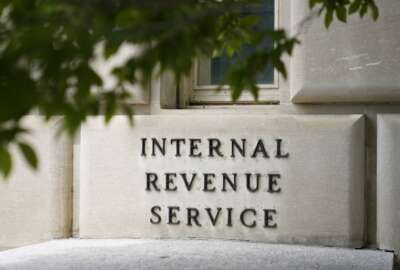IRS using ‘every tool available’ to ramp up agency recruitment, retention
To reach a goal of bringing in 20,000 employees, IRS Human Capital Officer Traci DiMartini has a major hiring strategy planned, covering everything from direct ...
After the IRS reached a workforce of 90,000 federal employees at the end of fiscal 2023, agency human capital leaders are looking ahead to even more hiring over the next few years.
To reach the IRS’ goal of hiring about 20,000 employees by the end of fiscal 2024, Traci DiMartini, the IRS’ human capital officer, said she intends to use “every tool that is available to us.”
“We have this tremendous opportunity to replenish our workforce with amazing talent,” DiMartini said in an interview with Federal News Network.
The planned recruitment tools include, for instance, taking advantage of direct hire authority options, hosting and attending recruitment fairs and events, updating IRS’ social media and communications strategies, focusing on recruitment of veterans and military spouses, and using the Pathways Program for early-career recruitment.
On top of those strategies, perks such as a “telework-friendly” workplace, a remote work pilot, student loan repayment options, and recruitment incentives for new accountants should additionally help bolster the IRS workforce, DiMartini said.
Many of the strategies are already underway — in fiscal 2023 alone, the IRS gave out more than $50 million in student loan repayments to its employees.
“And we’re looking forward to adding tuition assistance programs, so our current workforce can choose to go back to school and further their career path while still working with the IRS,” DiMartini said.
The agency’s lofty staffing goals come after an influx of investments by way of the Inflation Reduction Act (IRA). After a reduction that occurred during 2023 debt ceiling negotiations, the IRS now has roughly $60 billion to rebuild its workforce and modernize its legacy IT systems over the next decade.
The investments from the IRA are crucial to the agency, DiMartini said, particularly after more than a decade of the agency receiving austerity budgets. The funding will be especially key going forward, as more IRS employees become eligible to retire.
“We have the opportunity to transform the IRS in a way that hasn’t been done for so long because we’ve been so starved of resources,” DiMartini said. “I really think that’s a driving factor for our current workforce — they can sense the excitement. This is truly a time of transformational change … This incredible workforce has been with us for many years, during very lean times, and they need help. I want to tell them, reinforcements are coming.”
Over the last year, IRS onboarded somewhere between 5,000 and 6,000 new hires to its call centers. The agency is now turning more of its attention to recruiting accountants — one of the positions with the highest demand at the IRS.
“If you know where all the accountants are hiding across the United States, I want all of them,” DiMartini said. “They serve such an incredible purpose, as revenue agents really helping taxpayers understand the tax code and making sure that they’re able to get their questions answered.”
Moving forward, DiMartini also plans to implement ideas from her experience leading human capital shops at other agencies, such as the General Services Administration. Notably, the IRS’ recruitment process will involve the use of subject-matter experts — particularly when hiring auditors and revenue agents.
“Honestly, that’s the best way we can recruit — having people that actually do the jobs sit at the table by our side to explain what the job entails, and just how diverse and interesting the work is,” DiMartini said. “They also do help us evaluate the technical skills of our applicants and make sure that we’re getting individuals that not only have a passion to enter the civil service, but have the technical skills that we need to have a top-notch auditing team in the IRS.”
Additionally, DiMartini said her team plans to revamp the IRS’ use of USA Staffing — a program run by the Office of Personnel Management that manages application and employment data for many agencies. By updating the program with capabilities such as sending text messages to applicants, DiMartini said she hopes to reach a younger sector of the workforce and provide them with more real-time updates on the hiring process. The IRS is partnering with OPM and the Treasury Department to add the capability in the near future.
Beyond the numerous recruitment strategies, DiMartini said her team is also approaching employee retention in a new way, by looking for avenues to improve employee engagement among the current workforce.
“After so many years of not having enough money to properly staff offices or really invest in basic work needs, such as good information technology or supplies, we have the opportunity to reinvest all across the service,” DiMartini said. “I think what that’s going to translate to is stronger employee engagement and a stronger sense of pride.”
Copyright © 2024 Federal News Network. All rights reserved. This website is not intended for users located within the European Economic Area.
Drew Friedman is a workforce, pay and benefits reporter for Federal News Network.
Follow @dfriedmanWFED






